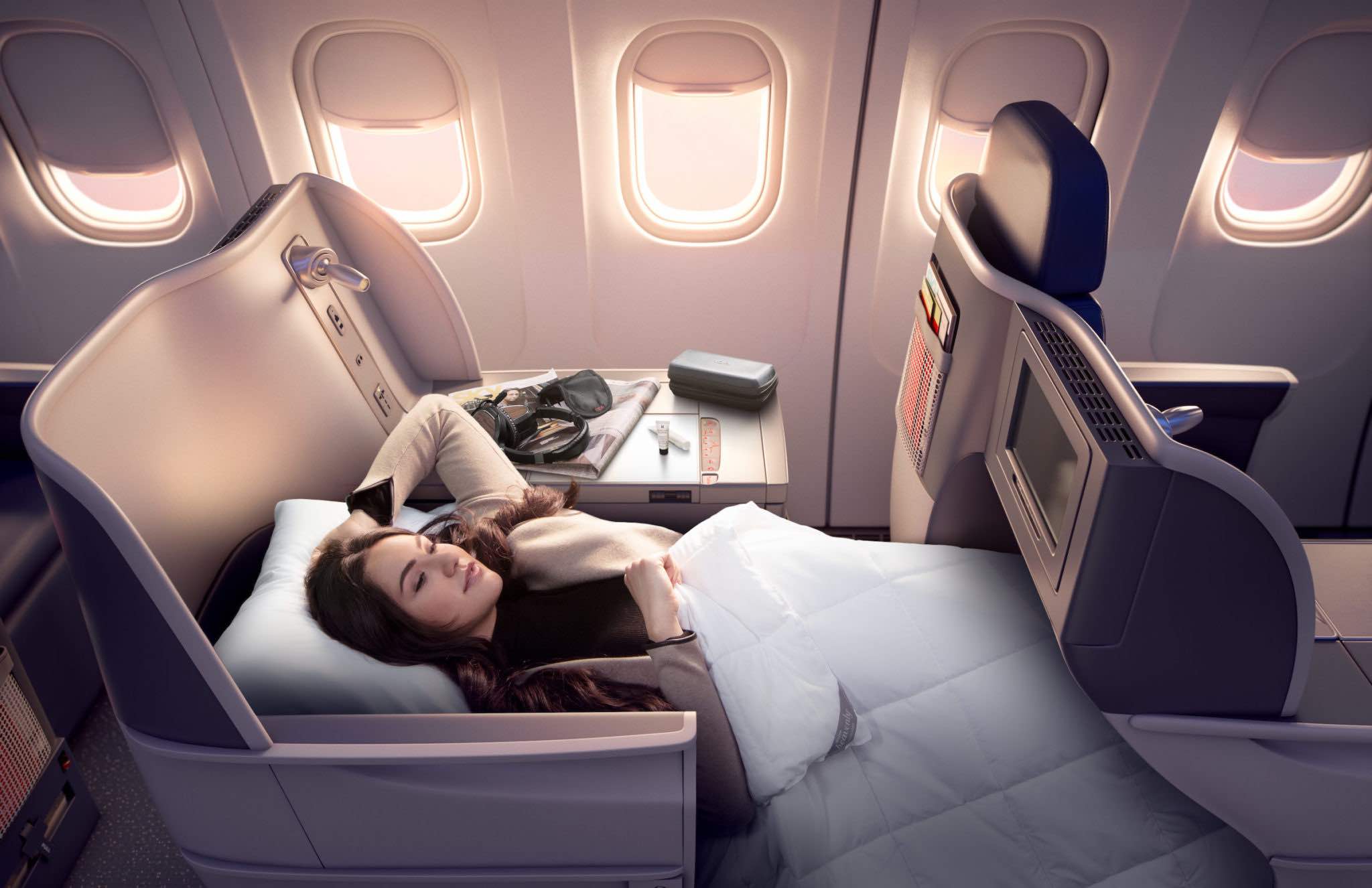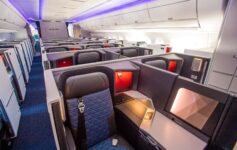
Delta’s latest earnings call made one thing unmistakably clear: the airline is no longer pretending to be everything to everyone. It wants to be the United States’ premium carrier, and it’s building its business model around that assumption.
Executives Make Clear Delta Air Lines Isn’t Chasing Every Passenger, Just The Ones Who Pay More
It’s hardly news that Delta considers itself a premium carrier, but the recent Q3 2025 earnings call made Delta’s future ambitions unmistakably clear.
Delta’s Focus On Affluent Travelers
President Glen Hauenstein put it bluntly: “I think our exposure to a higher household income cohort has enhanced our relative position versus carriers that are catering to a more stressed, lower to middle-income environment.”
Wow.
That’s as close as you’ll get to an airline executive saying the quiet part out loud. Delta isn’t chasing every traveler: it’s targeting those who are least likely to cut back when the economy slows. The strategy is deliberate: fewer bargain seekers, more customers who value experience and can afford to pay for it.
“We continue to invest in the higher-end products, whether or not that’s opening up new Delta One lounges or check-in areas. As we continue to take delivery, they come with a higher mix of premium products. Most of our growth, if not almost all of it, will be in the premium sectors,” Hauenstein added. Those aircraft are being redesigned around premium seating ratios. Roughly 25–30% of the additional premium capacity is coming from retrofits, and the rest from new deliveries rolling straight out of the factory with more Delta One, Premium Select, and Comfort+ seats.
Premium Revenue Surging Past Main Cabin
JP Morgan’s Jamie Baker pressed for detail after Delta reported that premium revenue growth outpaced main cabin by 13%, a record gap. Hauenstein explained the shift in consumer behavior: “Once people get used to traveling in a certain product, whether it’s Comfort Plus, Delta Premium Select, or Delta One, they tend not to go back. Their retention rates are in the mid-80%.”
And speaking from personal experience, he’s exactly right…
He compared the psychology to buying a better car: you don’t revert to something worse once you’ve upgraded. That’s the same principle driving Delta’s long-term premiumization. Customers who try premium experiences keep coming back, and those retention metrics give Delta recurring high-yield revenue. Hauenstein added that Delta isn’t at the “end state” yet, as the distribution and sales systems still have more room to expose those products across booking channels.
He also tied the shift to geography. Delta has poured money into coastal hubs like Los Angeles, Seattle, Boston, and New York, “where a considerable amount of premium lives,” as he put it. That concentration of affluent markets supports the company’s strongest pricing power. “Corporate travel is our bread and butter. We are the very best at it. Corporate travel is premium.”
Corporate Meets High-Yield Leisure
When Baker asked what portion of premium revenue comes from corporate versus leisure, Hauenstein estimated 30–40% from corporate accounts, with the rest high-yield leisure. In some cases, he said, “personal leisure is higher than corporate these days.” That overlap gives Delta the flexibility to manage yield without being overly dependent on one customer type. The problem, ironically, is that some routes now run out of premium inventory for corporate travelers because those seats are being snapped up by individuals willing to pay higher fares out of pocket.
Main Cabin, by contrast, has stagnated. Seat counts are “relatively flat,” Hauenstein said, as Delta trims capacity in competitive hubs and leans into yield management (a process called “rationalization” in the airline industry). The goal is not volume, it’s margin.
CONCLUSION
Delta’s messaging this quarter was unmistakable: the airline sees its future in premium travel and I’ve never seen it expressed so clearly. From aircraft design to lounge openings to route structure, every investment now points toward the top of the market. It’s not chasing passengers who want the cheapest ticket; it’s catering to those who never stopped paying for comfort.
When asked if premium revenue might surpass main cabin as soon as next year, Hauenstein didn’t hesitate: “I think you will.” For Delta, the premium era isn’t coming, it’s already here, but will continue to be the focus. Delta is staking its future on that.
image: Delta




Another way of looking at it is Delta’s economy is overpriced and so people either book cheaper alternatives or they’re captive to Delta and pay double or triple the price of economy to sit up front. Either way, Delta on many domestic and international guests doesn’t have enough first-class or business-class seats. On the 737, 320 and 321s, they could easily added 2-3 additional rows of first-class.
Not sure what the strategy is for Delta but as I mentioned in other posts, my loyalty to them is about convenience which means decent prices for non-stop flights. If connecting somewhere anyway, I am shopping around. Just looking for 4 tickets to Brazil around Christmas time. Cheapest Delta One is at $9,360 per person while economy is at $3,300. So, I have the options to spend $13,200 to fly my family in coach or $37,440 to fly on business. Of course I won’t waste almost $40k on a Delta flight. So I am shopping around with other airlines. Now, what is interesting is that when I look at the Delta One Cabin, it is still 95% open which means people are not paying that crazy price. Will keep watching it.
I wonder if Delta is trying to drop that route because the only reason you price it that high with an empty cabin is to avoid people buying the ticket so you can eliminate it later.
Absolutely not. I am talking GRU in Brazil which has several direct Delta flights from the US. Around December holidays (no matter when you choose) all Delta One options are over $9k per passenger.
It is still quite early in the booking curve for travel to S. America for Christmas.
DL wouldn’t be holding out for those fares if they didn’t think they could get them.
Nothing says premium like jamming 3 rows of economy seats with the first class seats in front of the 2nd boarding door on a 757
It’s the right strategy for an ever-increasing divide between rich and poor. The future of commercial aviation is catering to the upper-middle-class, those with enough disposable income to purchase First Class, Business Class, Premium Economy, extra legroom, and/or to spend at least several tens of thousands of dollars on their co-branded credit cards each year.
So, Delta, (Tim Dunn), it is indeed time to ditch the CRJs, 763s, 717s, and a319s, and get consistent cabins on more premium-heavy aircraft like the 195 E2, 35K, 787, and a220, as replacements. Oh, and please, do keep opening new DeltaOne lounges (there really should’ve been one at ATL by now.)
Makes sense as the bifurcation of the US economy becomes more extreme every year.
I really don’t get it. I flew DL RDU-ATL yesterday. There were 62 people on the upgrade list. There was a wait to get in to the RDU sky club, and I noticed a line of probably 40 people waiting to get in to the SC in A in ATL. The flight was under 500mi so there wasn’t a beverage service.
A comparable route with AA or UA would have had less people fighting for an upgrade, lounge options available, and a full beverage service. How is that less premium?
I agree people love Delta but I really don’t get it.
What do you mean no beverage service? They may not serve alcohol under 500 miles but for sure there is a beverage service. Also, there is no love for Delta but a company that delivers a great service that meets my needs. As a Delta hub flyer and Diamond/360 for over 15 years in a row, I have almost nothing to complain about Delta. When I need to call them some nice agent will pick up the phone immediately and treat me well. Their flights are mostly on time, clean and service is great. Thus, as long as they meet my needs I have no reason to change.
Choices were water/tea/coffee. No soda, alcohol, or anything else. Even on request. I looked up Delta policies, and this is indeed the published service in flights 250-499 mi. UA and AA do full beverage service on flights of this length. I’m glad you’ve had good experience with them. I’ve flown DL a few times this year, and all my experiences have been subpar. I’m not questioning the quality of the airline as much as stating that I don’t understand how people seem to love them so much.
Similar experience/track record for me too. Took an entire 3.5 hour flight to do one beverage service on a recent DL flight. I kept thinking I missed them only to look up and see them one foot further down the aisle. Thought it was a fluke but happened on the way back too. Very odd.
The planes were fine, the FAs certainly very nice, but agreed I really don’t understand what the hype is or why people get fiercely protective over them outside of just living in a hub city.
Just flew on a 2,5hour Delta flight today. Full beverage and snacks once then water in glasses (on a tray) twice for the remainder of the flight. I was on Delta Comfort and got the special snacks tray twice.
if they really want to attract the high end flyer, they need to bring back F
F is the top premium leisure product these days. Who cares if business travelers won’t fly it, when it will be booked up months in advance by premium leisure travelers
Re: (different blog post) “Note: I am derek, not Derek. Derek is the other guy.” and “ … you cannot rewrite the rules of spelling and grammar. … “Dictionary: “proper name”, noun: a name used for an individual person, place, or organization, spelled with initial capital letters, e.g., Larry, Mexico, and New York Yankees.””. Okay, I’ll bite, are you the same author and if so have you changed your name, accepted traditional rules of spelling and grammar, drank TOO much Kool Aid, using capital D because it’s a blog post about Delta?
Fascinating that it was the JP Morgan analyst pressing the question. Meanwhile in JP Morgan Chase land, we have the CSR saying if you spend $75k we’ll give you a $500 Southwest credit and status at America’s most popular IHG hotel, the Holiday Inn Express. What Delta and Amex have figured out is that the perception of a brand is actually important and becomes a self-fulfilling prophecy for the consumer.
Unless and until Southwest actually invests in a dedicated First Class (highly unlikely), it is not a ‘premium’ airline. It really is laughable that Chase thought the SW benefits for that spend would fit their target market. Like, if anything, they should have negotiated some benefit with United; like, spend $75K, get… 40 PlusPoints (not that those are worth anything, but, you know, it’s the thought that counts.)
I like DL a lot but DL is delusional if they think they own corporate travel. UA kills DL in APAC network and fleet and at worst equivalent in every other major international business region. Does DL mean domestic? Also UA has more natural strength on the coasts where DL admits the premium market is stronger. This is a very rosy and aspirational quarterly. Reality is different. They can get there, but current state is different and they are not separating from UA in premium. At best holding steady (which is to say DL is already a bit better to be clear)
Delta simply cares more corporate travel than any other airline.
And that corporate travel comes on the domestic system, the network that UA chose to ignore while it built up its international network.
Compared to domestic, TPAC carries a pretty small part of the total corporate travel volume.
Facts, not rooting for something you don’t understand, matter.
@ Tim Dunn, TPAC matters hugely for my company (and I’m sure it matters for other companies with suppliers in Asia) – thats why UA is our preferred carrier. Delta doesn’t fly to Beijing or Singapore and only covers Taiwan out of Seattle – so by not developing that network they have lost plenty of business to UAL.
again, TPAC is a much smaller part of total corporate travel than domestic.
DL has managed to grow over the past 15 years – and turbocharged it over the past 5 years – in large affluent coastal markets that have large corporate travel volumes. DL is the largest domestic carrier in NYC where there is a huge corporate travel market. DL has overtaken B6 in BOS and AA at LAX and is taking on UA in TPAC markets.
DL has simply managed to build a huge connecting network across the US and the world largely via ATL, DTW, MSP and SLC but also in the largest corporate travel markets on the coasts.
UA is #1 in corporate travel just in Chicago among the top 3 markets while AA now holds that title in none of the big 3 markets.
Your anecdotes and choices don’t matter in an industry that serves one billion customers just to/from/within the US.
DL is correct in saying that it has built the largest network connecting small, medium and large affluent markets and customers in the US and probably the world.
and the partnership with Amex – which gets higher average credit card charges than other cards – takes full advantage of DL’s network.
Delta should keep maintaining betting its future on the inbred morons from the South and their captive hubs who fly them for lack of awareness of any other airline. It’s worked for the evil ones so far.
Premium corporate travelers can also be economical leisure travelers. When I was a management consultant on the road every week I was one of my few coworkers not flying Delta and flying United. Sure it Delta was a nicer experience, but I wanted my miles to have value for my personal vacations. It’s great when my employer is footing the bill for the premium cabins, but doesn’t help me much when I need 400k+ points to get anywhere abroad in biz “for free”.
I think the typical road warrior has changed though, used to be everyone from fresh college grads to executives. I think you see more senior employees traveling (and thus likely with deeper pockets) so maybe weighting the value of points is less important now
What is being clearly implied but isn’t being said is that they’re, even more than their main two domestic competitors, basically only focusing on US-based clientele and not looking to attract premium leisure flyers based in other markets (whether they travel to the USA itself or elsewhere in the Americas). They’re effectively betting on the country retaining its superpower status which it’s already lost in terms of its share of global GDP (I think it’s gone from a peak of about 42% to more like 20%) and may well end up losing politically/militarily within a decade or so. Doesn’t look like a good long term strategy to me, but I guess that by the time the possible consequences hit the company, the managers involved in its design will have moved on and taken their fat bonuses with them!
You certainly can’t say that Delta lacks arrogance. Unfortunately for them not all of us that are their target demographic find that appealing.
Right or wrong, like it or not, every airline has its own plan of action. This is DELTA’s.
Dr. Güntürk Üstün
Have Business Traveller barred you and is that why you’re posting nonsense here now?
I view it this way: in pro sports ticket sales, teams don’t profit from people who buy nosebleed seats. They profit from sold box suites and expensive terrace seating. The nosebleeds are mainly for the team to potentially make money off concessions and parking (achieved simply by getting fans into the stadium). So in Delta’s case, as was said earlier, they’re just saying the quiet part out loud and I don’t have a problem with that. There’s a reason NK and F9 have 60% empty flights to FLL despite $45 fares… not sustainable.
I’m flying personal to AMS and returning from BRU and selected D1 both ways for the first time. The BRU – JFK return D1 was $10 more than my normal PS — that one was a no-brainer.
I was later offered a $699 upgrade to D1 for the BOS-AMS leg and grabbed that immediately. In both cases I see the prices as relative bargains and difficult to ignore. I’m not a status customer.
If Delta continues to offer opportunities to go with D1 at prices a mortal can justify, of course I will continue to upgrade. But as always, I will evaluate pricing across all choices and not be driven by blind loyalty — to an airline or seating product.
Can I ever go back after D1? I guess we’ll see.
Delta’s new domestic first class is the worst hard product available in the U.S.
In an attempt to fake the appearance of a higher end international business class seat, they only managed to remove arm room, leg room, bag storage room, and make the seat less comfortable. As a 6’5″ traveler who books first class for a good reason, I literally dread flying Delta’s new cabin.